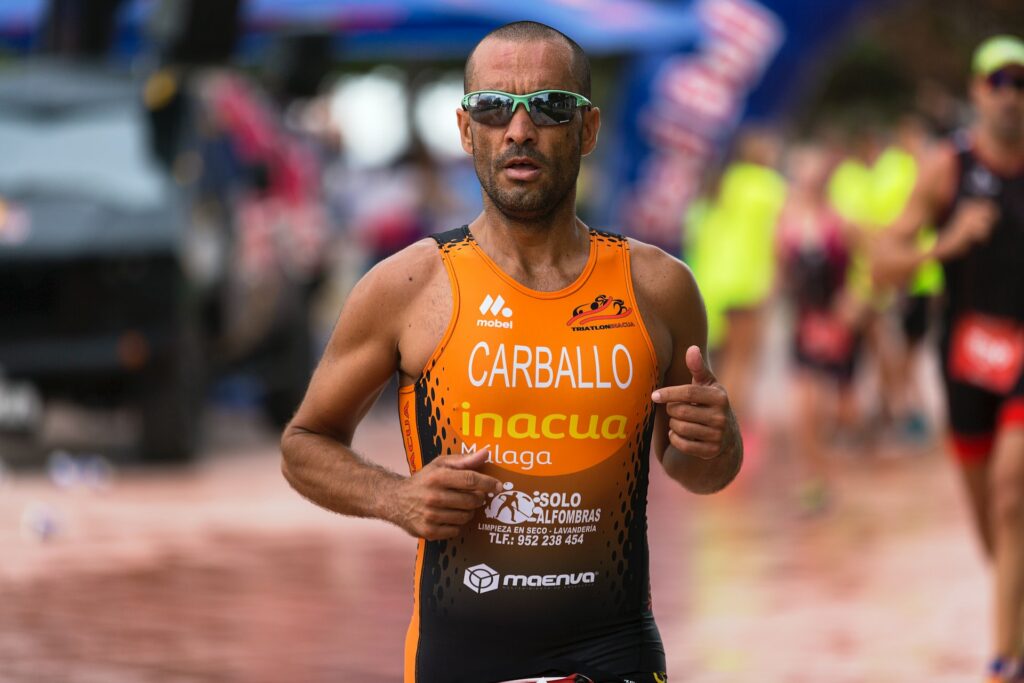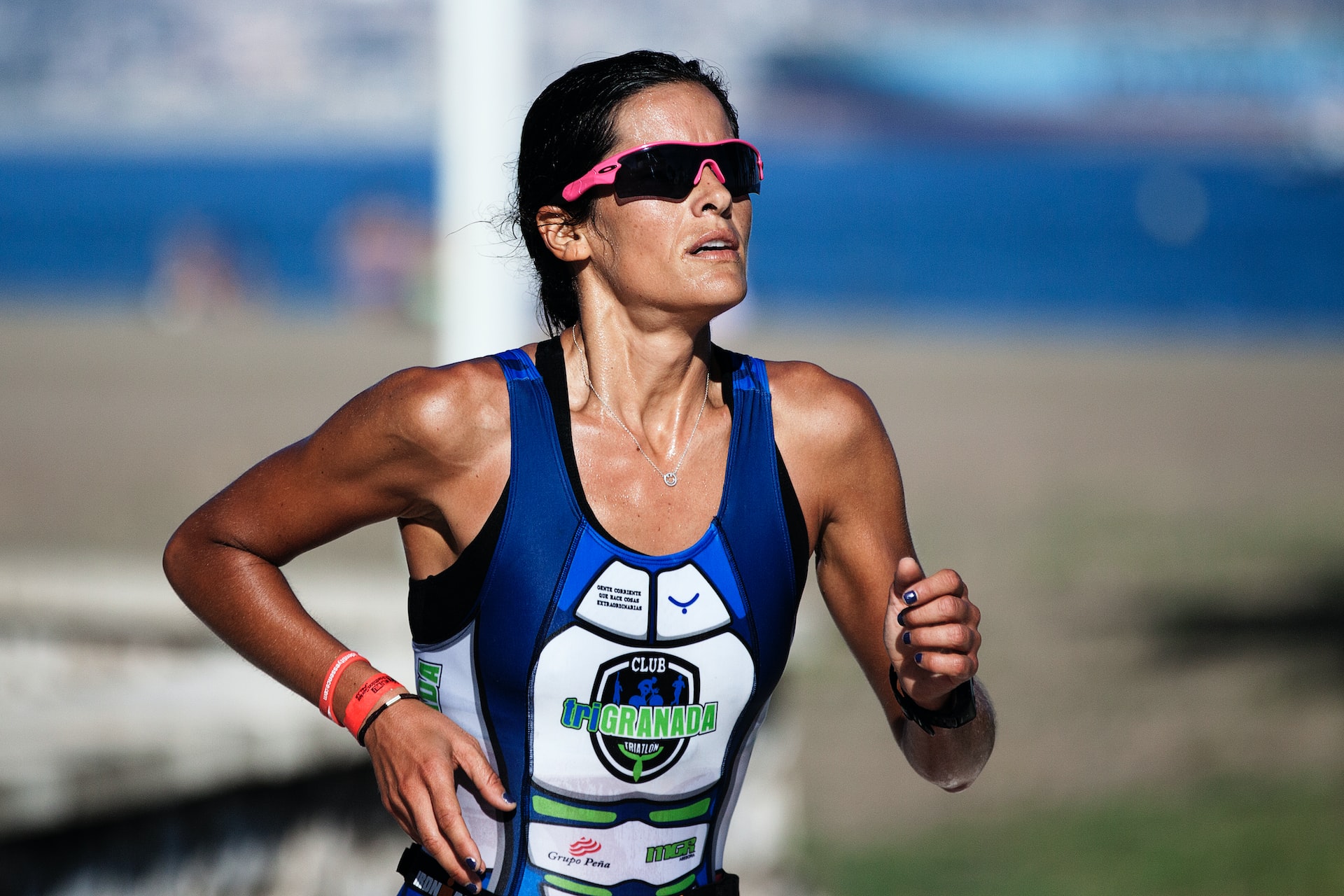Running is a fantastic form of exercise that offers a wide range of physical and mental benefits. However, for people who wear glasses, the thought of running can be intimidating. They may worry that their glasses will slip, bounce, or fog up during their run, leading to discomfort and distraction. They may also be afraid that they will not be able to wear headphones while running, that the headphones will interfere with the glasses, may fall out while running, and so on. Some may even avoid running altogether, thinking that their glasses make it impossible.
But fear not! With the right tips and techniques, running with glasses can be comfortable, easy, and enjoyable. In this article, we’ll share some practical tips for runners who wear glasses, including how to choose the right glasses, prevent slipping and bouncing, and avoid fogging. We’ll also provide some bonus tips for contact lens wearers who may be considering a switch to glasses for running, as well as tips for wearing headphones while running with glasses.
Whether you’re a seasoned runner or a newbie, these tips will help you focus on the run and achieve your running goals with confidence and clarity. So, let’s get started!
Choosing the Right Glasses for Running
Choosing the right glasses for running can make a significant difference in the comfort and effectiveness of your workout. Here are some factors to consider when choosing glasses for running:
- Fit: The fit of your glasses is essential for comfortable and stable running. Look for glasses with adjustable temples and nose pads that can be customized to your face’s shape and size. Choose glasses that fit securely and snugly without being too tight or loose.
- Lens Type: The type of lens you choose can affect your vision and performance during a run. Consider glasses with lenses that are polarized, photochromic, or tinted to improve clarity and reduce glare. You may also want to look for glasses with lenses that are impact-resistant and scratch-resistant to protect your eyes from debris and hazards.
- Frame Design: The design of your glasses can impact their stability, comfort, and weight. Look for glasses with a wraparound design that provides a wide field of view and prevents slipping or bouncing. Consider glasses with a lightweight and durable frame that won’t weigh you down during a run.
Some specific examples of glasses that work well for runners include the Oakley Flak 2.0 XL, which features a wraparound design, adjustable nose pads and temples, and interchangeable lenses. Another option is the Nike Vaporwing Elite, which has a lightweight and aerodynamic frame, a comfortable fit, and polarized lenses for optimal vision. Other good brands to consider include Under Armour, Smith, and Tifosi.
By choosing glasses that fit well, have the right lens type, and feature a suitable frame design, you can run with confidence and comfort. Remember to try on different glasses and test them out during a run to find the ones that work best for you.
Preventing Slipping and Bouncing
One of the most common issues that glasses wearers face when running is slipping or bouncing glasses. This can be distracting, uncomfortable, and even dangerous, especially when running on uneven terrain. Here are some practical tips for preventing your glasses from slipping or bouncing during a run:
- Use a Strap or Sport Band: A strap or sport band can help keep your glasses in place and prevent them from slipping or bouncing. Look for a strap or band that is adjustable and comfortable, and make sure it fits snugly around your head without being too tight. Some runners even use a simple piece of string or elastic to create a DIY strap.
- Adjust the Fit: Adjusting the fit of your glasses can also help prevent slipping and bouncing. Make sure the temples and nose pads are adjusted correctly to fit your face. If your glasses have adjustable temples, bend them slightly to create a better grip around your ears. You can also use an eyeglass repair kit to tighten the screws that hold your glasses together.
- Choose Glasses with a Nonslip Coating: Some glasses are specifically designed for sports and have a nonslip coating on the temples or nose pads. This coating can provide extra grip and prevent slipping or bouncing during a run. Look for glasses with a rubberized or silicone coating that can provide a secure and comfortable fit.
For example, some runners use the Croakies Terra Spec Cords, which are adjustable straps that attach to the temples of glasses to keep them in place. Others opt for glasses with nonslip coating on the nose pads, such as the Maui Jim Ho’okipa, which is lightweight and comfortable, and features a nonslip nose pad for a secure fit. Some runners even use a bit of beeswax or lip balm on the temples or nose pads to create extra grip.
Avoiding Fogging
Another issue that glasses wearers face when running is fogging, which occurs when moisture from sweat or breath condenses on the lenses, obstructing your vision. Here are some practical tips for preventing fogging in your glasses:
- Use an Antifog Spray: Antifog sprays can help prevent moisture from condensing on your glasses by creating a barrier that repels water. Look for sprays that are specifically designed for glasses or sports gear and follow the instructions carefully. You may need to reapply the spray periodically, depending on the intensity of your run.
- Wipe the Lenses with a Cloth: Wiping your glasses with a clean and dry cloth can also help prevent fogging. Look for a microfiber cloth that is specifically designed for glasses, and carry it with you during your run. You can also use your shirt or a towel in a pinch, but be careful not to scratch the lenses.
- Adjust Your Breathing: Adjusting your breathing can also help prevent fogging. Try to breathe through your nose instead of your mouth, as this can reduce the amount of moisture that reaches your glasses. You can also try adjusting the fit of your glasses to create more airflow around your lenses.
For example, some runners use the Cat Crap antifog spray, which is specifically designed for glasses and can be easily applied on the lenses before a run. Others carry a microfiber cloth in their pocket or waistband and wipe their glasses periodically during the run. Some runners even use a bit of dish soap or shaving cream to create a thin film on the lenses that can prevent fogging.

Wearing Headphones While Running with Glasses
If you want to listen to music or podcasts while running with glasses, there are some practical tips you can follow to ensure comfort and safety. Here are some tips for wearing headphones while running with glasses:
Choose the Right Type of Headphones: The type of headphones you choose can affect their compatibility with glasses. Look for headphones for glasses wearers that have a slim and low-profile design, such as earbuds or in-ear headphones, as they are less likely to interfere with your glasses.
Although over-ear or on-ear headphones can interfere with the temples or frames of your glasses, the Treblab Z2 headphones have been designed to be more compatible. However, it’s worth noting that they may be a bit bulky or heavy compared to other headphones.
When selecting headphones for running with glasses, it’s generally best to avoid models with hooks as they may interfere with the fit of your glasses. Instead, in-ear headphones or models with a neckband can be a better choice. In-ear headphones are typically more compact and offer a secure and comfortable fit, while headphones with a neckband can provide added stability and prevent the headphones from bouncing or falling out during your run.
Bonus Tips for Contact Lens Wearers
If you wear contact lenses but are considering wearing glasses for running, there are some practical tips you can follow to make the transition easier and more comfortable. Here are some tips for contact lens wearers who may be considering wearing glasses for running:
- Choose the Right Glasses: When choosing glasses, make sure they are comfortable and fit well. Look for glasses with a lightweight and breathable frame that won’t weigh you down during your run. Consider glasses with a wraparound design that provides a wider field of view and protects your eyes from debris and hazards. Choose lenses that are polarized, photochromic, or tinted to reduce glare and improve vision.
- Make the Transition Gradually: If you’re not used to wearing glasses for running, it’s best to make the transition gradually. Start by wearing your glasses for shorter runs or during your warm-up, and gradually increase the duration and intensity of your runs. This can help your eyes and brain adjust to the new visual information and reduce the risk of headaches or eye strain.
- Bring Backup Contact Lenses: It’s always a good idea to bring backup contact lenses in case you need to switch back during your run. You can carry them in a small case in your pocket or running belt. Make sure to also bring a small bottle of contact lens solution and a clean cloth for hygiene and cleaning purposes.
For example, some runners who wear contact lenses find that glasses with adjustable temples, such as the Nike Terminus, can provide a comfortable and secure fit during a run. Others opt for glasses with a wraparound design and photochromic lenses, such as the Adidas Horizor, which can provide optimal vision in different lighting conditions. Some runners also find that starting with shorter runs while wearing glasses and gradually building up to longer runs can help their eyes adjust and reduce discomfort.
Conclusion
In summary, runners who wear glasses may face challenges such as slipping or bouncing glasses, fogging lenses, and difficulty wearing headphones. However, there are practical tips and techniques that can help overcome these challenges, such as choosing glasses with adjustable temples, using antifog sprays or wipes, and selecting the right type of headphones. It’s important to address these challenges as running with glasses can be more comfortable and enjoyable with the right techniques.
We encourage readers to try these tips and find the ones that work best for them. With the right techniques, running with glasses can be a comfortable and rewarding experience, allowing runners to achieve their fitness goals without sacrificing their vision. So if you’re a glasses wearer who’s hesitant to start running, don’t be afraid to give it a try – with the right preparation and equipment, you can enjoy all the benefits of running while still wearing your glasses.
